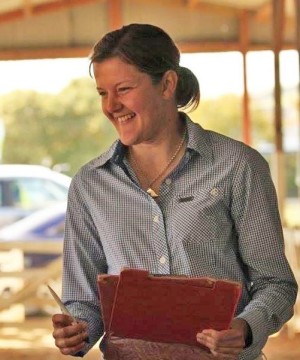Mar 16, 2023

Sara Elmes: keeping on top of all things environmental for deer farmers.
Cabinet is expected to release its final recommendation on the farm-level agricultural emissions pricing plan in the next month. But it’s only one of the environmental management changes deer farmers are having to grapple with and work out how to implement in reality on-farm, according to DINZ environmental stewardship manager Sara Elmes.
For HWEN partners four key areas have been identified as needing further work before the final decision is made: levy prices/revenue sufficiency; transitional levy relief; the sequestration strategy; and government implementation.
Work is already underway on calculating levy revenue and how it will be used, while Government is yet to start on finding a “consistent approach to recognising genuine sequestration on farms that meet needs of the Crown and farmers.”
For transitional levy relief, it was agreed that a mechanism would be progressed if ‘low’ levy prices still resulted in severe financial impact on particular groups of farms where access to sequestration was severely restricted by national and local body regulation and farmers have no access to effective mitigations.
DINZ is also advocating for deer farmers’ interests in other impact areas (see below).
Winter grazing
Deer farmers selecting paddocks and deciding on grazing plans for winter 2023 crops are now affected by the new intensive winter grazing regulations that came into place last 1 November 2022, in the National Environmental Standards for Freshwater 2020 (NES-F), as part of the Essential Freshwater Reforms.
“There are three pathways for winter grazing, though confusingly the freshwater farm plan gateway is not available,” she notes. “Deer farmers’ intensive winter grazing either complies with the NES-F, or requires a resource consent. Each council may have different guidelines for winter grazing so it may pay for farmers to jump onto their regional council website for information on specific areas.”
Elmes is also advising deer farmers to keep an eye open for the DINZ and B+LNZ wintering workshops that will be run over the next few months.
More information on winter grazing >>
Freshwater farm plans
In addition, freshwater farm plan (FWFP) regulations are expected to be ready for roll-out region-by-region, from mid-2023. The first three areas will be Southland, Gisborne and Waikato.
Many farms will already have farm environmental plans in place, “which we are reassured will put most people 80-90 percent on track to a FWFP,” says Elmes. All farmers with 20 hectares or more in arable or pastoral use or five hectares of horticultural use must have a FWFP, she adds.
Stock exclusion
Stock exclusion regulations, requiring stock to be kept out of specified wetlands, lakes and rivers more than one metre wide, have been in force since 3 September 2020. These apply to a person who owns or controls deer, beef cattle, dairy cattle, dairy support cattle or pigs.
The Ministry for the Environment’s low-slope map was updated in December 2022 to more accurately identify ‘low slope land’. Deer and beef cattle on land identified by the map must be excluded from water bodies from 1 July 2025 (or from 3 September 2020 on any new pastoral system). Deer have to be excluded from lakes and rivers by three metres where stock are on ‘low slope’ land – under 500m in altitude with an average slope less than 10 degrees.
“However, deer do not need to be excluded by three metres if there is an existing permanent fence,” she says. In addition, deer are not subject to the restrictions for crossing rivers and lakes, though cattle and pigs are.
Changes to three Regional Council Plans
At a regional level, there are changes to Waikato, Otago and Environment Southland Regional Council plans.
DINZ and NZDFA are a section 274 party to Beef + Lamb NZ submissions on the proposed Waikato Regional Plan Change 1 – Waikato and Waipā River Catchments.
Mediation for Minimum Farming Standards began on 21 November and will continue this year, explains Elmes. “There are new drafting gates for drystock (stock units per hectare) and low, medium and high-risk profiles out of this mediation process.”
Otago Regional Council (ORC) has drafted a new Land and Water Regional Plan.
“DINZ has submitted feedback on this and is waiting for the draft plan. ORC has sought an extension of a further six months to publicly notify the new plan.”
Meanwhile, Elmes says, Environment Southland is currently in the process of combining provisions from the Transitional Regional Plan, Regional Effluent Land Application Plan and Regional Water Plan into one document, the proposed Southland Water and Land Plan (SWLP). This introduces new methods to manage activities known to adversely affect the quality of Southland’s water.
However, after the proposed SWLP was made partially operative during a council meeting in January 2021, plan users and council decision-makers have been working under both plans.
“Until the plan is fully operative, and all appeal points have been resolved through the court, both plans are still applicable and making life incredibly difficult for consenting staff and farmers alike.”
Questions? Contact Sara Elmes sara.elmes@deernz.org, or 027 699 5070

